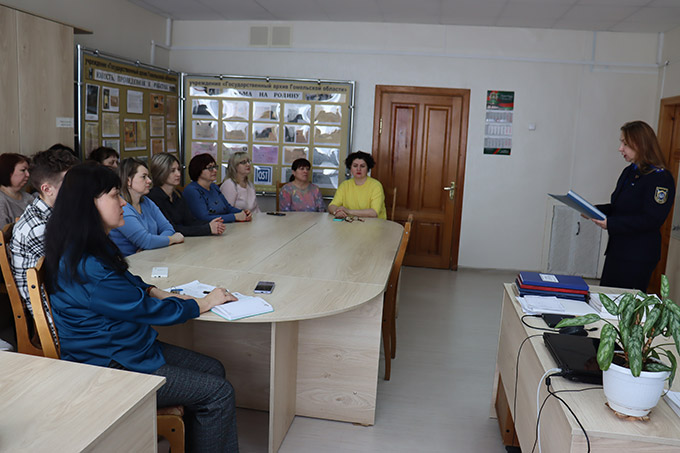On the lecture on corruption and crimes in the field of information technology held at the State Archive of the Gomel Region
On March 26, 2025, a lecture on «Prevention of crimes in the field of information and communication technologies» was held for employees of the State Archive of the Gomel Region.
Senior investigator of the linear procedural control department of the Investigative Committee of the Gomel Region Elena Afanasyeva spoke about crimes related to the use of high technologies. She explained the methods of fraud «vishing» and «phishing», the purpose of which is to steal money, carry out banking transactions and other crimes. The attackers use telephone communication, posing as employees of various government agencies. Under various pretexts, they find out personal information of the victims – logins, passwords, passport details, bank payment card numbers, SMS codes, etc. The criminals also disguise themselves under the logo of recognizable Belarusian banks, misleading potential victims. Often, attackers use Viber and WhatsApp messengers, which allow the use of virtual numbers. One of the methods of fraud by attackers is to place an ad for the sale of any goods at favorable prices, but to receive it, an advance payment or deposit is required. Fraud schemes are used by attackers in cryptocurrency transactions and exchange transactions on the crypto exchange. Often, citizens who are not specialists in this field themselves become guilty of committing such crimes. Elena Afanasyeva spoke about responsibility for facts of corruption in institutions and abuse of office. Rewards and gifts stretched out over the future to a higher official are regarded as a bribe. Embezzlement of state property, even in a small amount, is not subject to amnesty.
Archive employees discussed the topic of how not to fall into a fraudulent scheme and protect your loved ones.
 |
| 1. Senior investigator of the linear procedural control department of the Investigative Committee for the Gomel region Elena Afanasyeva gives a lecture |
 |
| 2. Archive employees – lecture participants |

